I’m working through a new approach to creating shrubscapes, shrub-meadows, woody meadows, shrub-prairies, or shrub-steppe (take your pick). This is a natural follow-on from my current work investigating coppiced landscapes (see previous article in menu, or link at bottom) and is a landscape method in its own right, but also a linkage mechanism between coppicescape and more open landscape.
To many gardeners, suckers are bad news and must be removed. They interrupt the form of plants, may be different from grafted species, come up where not wanted, etc. It is those very qualities which I seek to exploit and enhance and this article will tell you how and why.
I knew the linkage between my woodland edge/coppice garden area and the open garden wasn’t right; it just doesn’t grade well. So I was reading one of the (many) recent books I purchased, ‘Shrouded in Light’ by Kevin Philip Williams and Michael Guidi, which is a treatise, or exhortation, on the use of shrubs in a ecological manner, showing examples of many different types, though mostly from North America. An inspiring, but curious book, long on artistic expression but short on practical horticulture. I finally discovered what I was looking for though, on just a single page – p. 148.
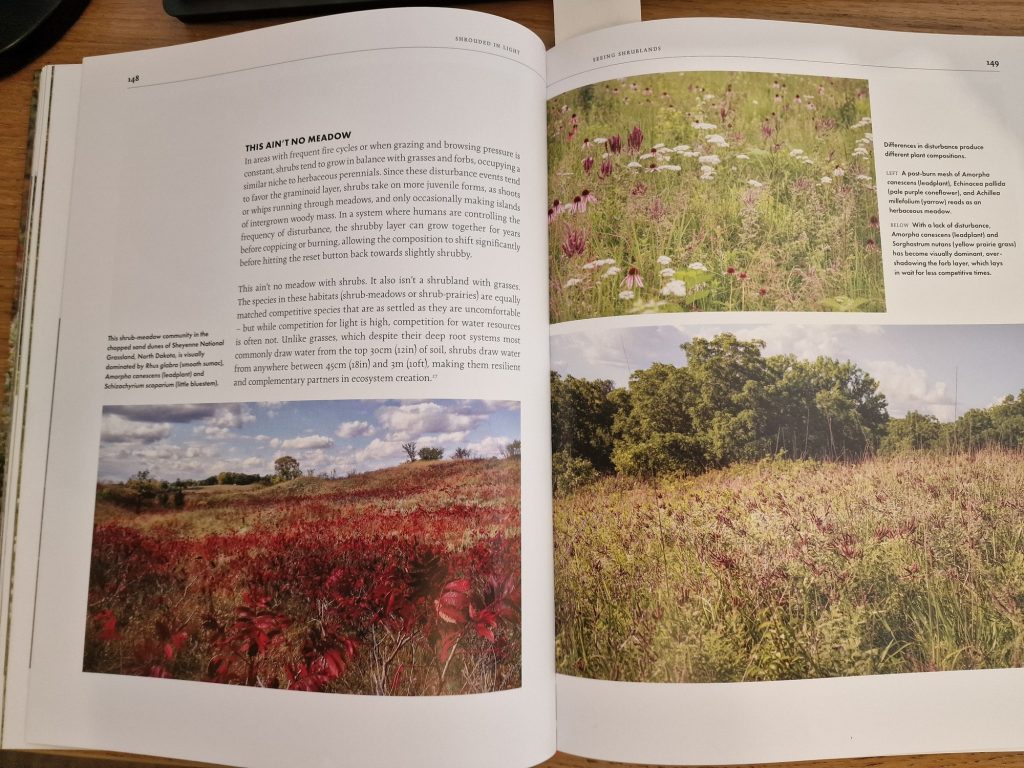
This page talked about the balance between shrub encroachment of Rhus glabra and prairie grasses and perennials in the US. I subsequently found some papers on the subject. In conservation terms, of course, such encroachment is always viewed as a negative occurrence, as it threatens the open prairieland. In terms of climate change, I would suggest this is the transformation of open areas into future woodland biome, but that is a discussion for another day.
What I found is that the balance between shrubs and grassland/prairie lies in the frequency of disturbance, either from grazing or from fire, with one paper suggesting that a four year cycle seemed to favour the balance between the two. For my purposes, this equates to pruning and gave me the methodology I was looking for. I propose to use shrubs to create a spreading landscape, along with select grasses and perennials, creating a linkage of low maintenance ecologically inspired urban shrublands. I say urban, but of course, it can be done anywhere, with the right adaptations.
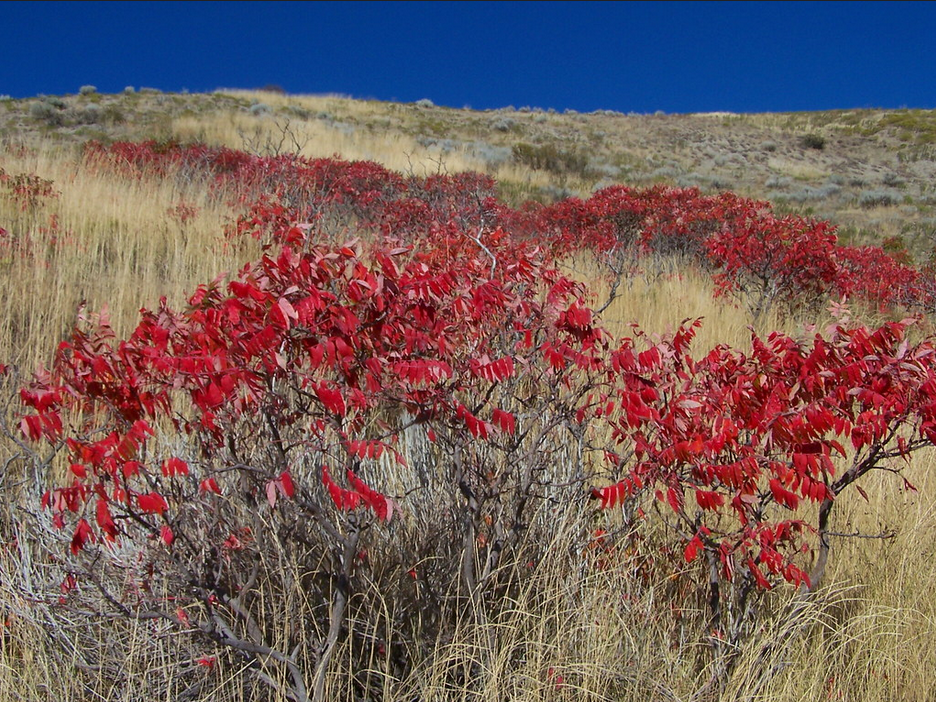
Not all plants that respond as coppice will work for this, most essentially remain as distinct clumps with multiple epicormic shoots from the base. What we need here are shrubs with running, stoloniferous roots. Rhus is a good example, so are certain dogwoods such as Cornus stolonifera or C. sanguinea. Cornus alba tends to remain in a clump and may be less useful for this, though some might still be used for vivid winter stem colour. Euonymus europaeus is another (naturally associates with Cornus sanguinea).
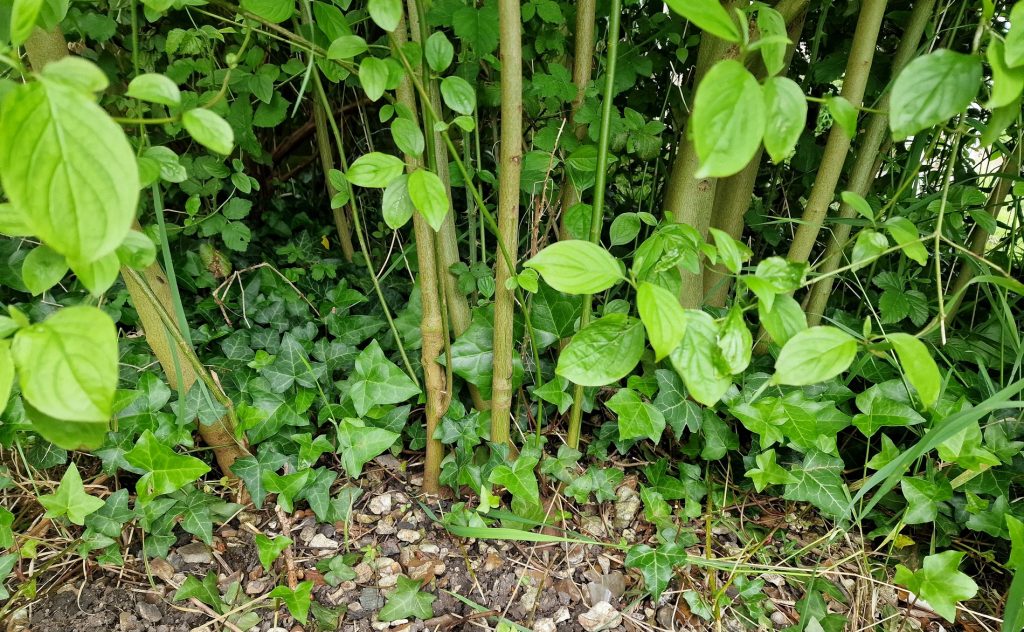
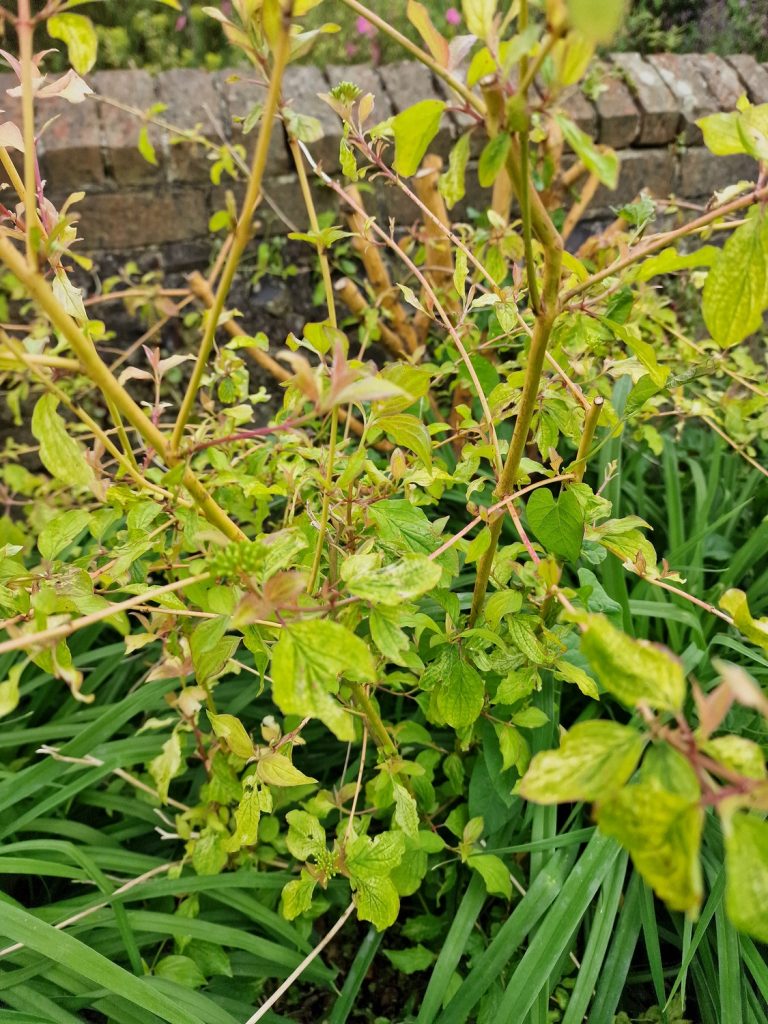
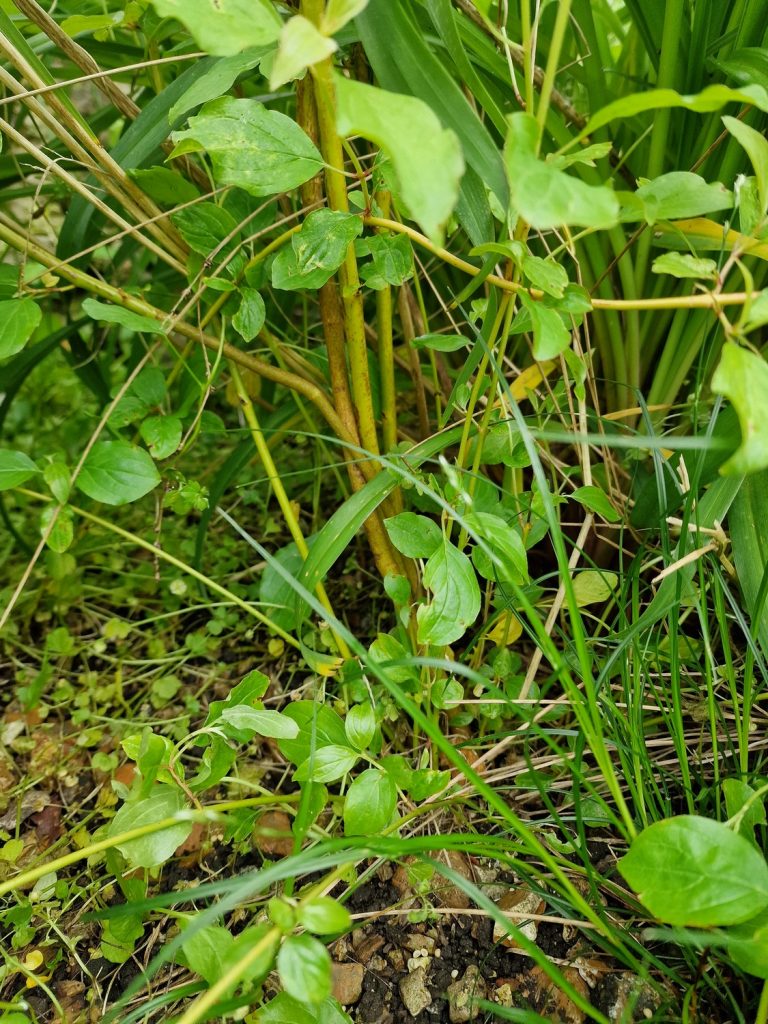
I have a feeling that quite a few species which generally remain as a clump, will send out stolons if stressed by regular pruning (that fire or grazing response), so I will be trying this with a number of plants in the garden, including Viburnum opulus and Aesculus parviflora. Trees like poplar will do this but might be too much in smaller gardens. Ornamental brambles like Rubus thibetanus Silver Fern, or R. cockburnianus will play the same ecological role as our native bramble, but with vibrant winter stem colours and would be great where boundary deterrents are needed, as would Robinia pseudoacacia, the stolons of which have particularly large thorns (there is a thornless variety I’m trying to get hold of). Some Berberis should work, along with certain Viburnums, Malus and Prunus. Do drop your suggestions in the comments below.
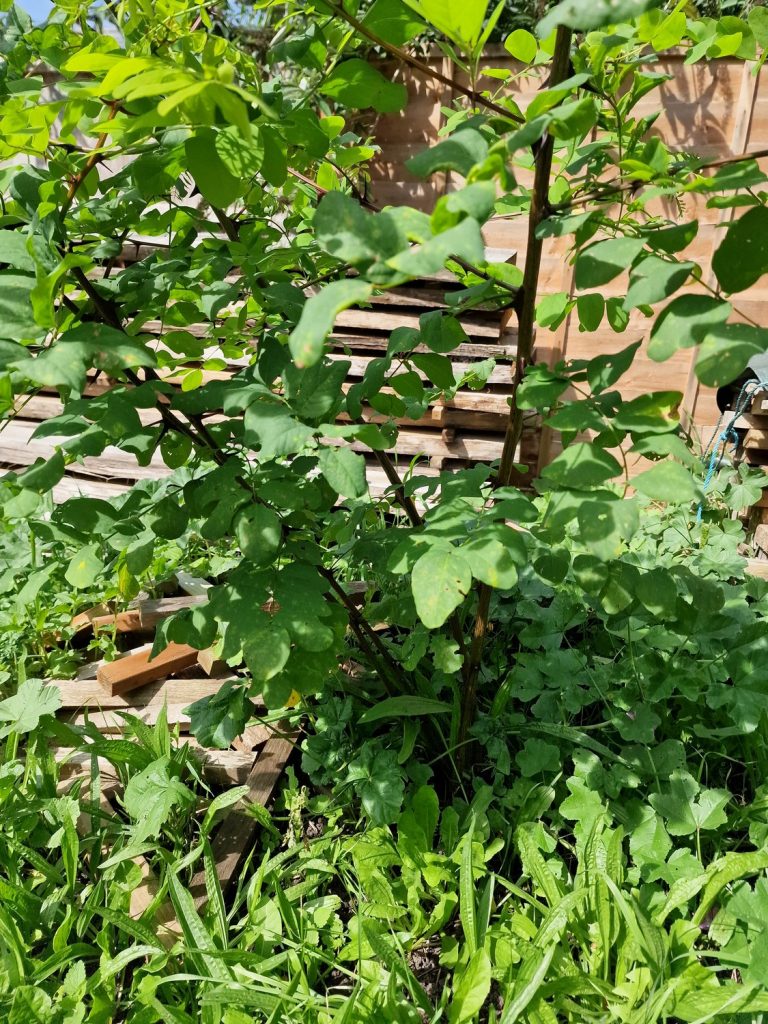
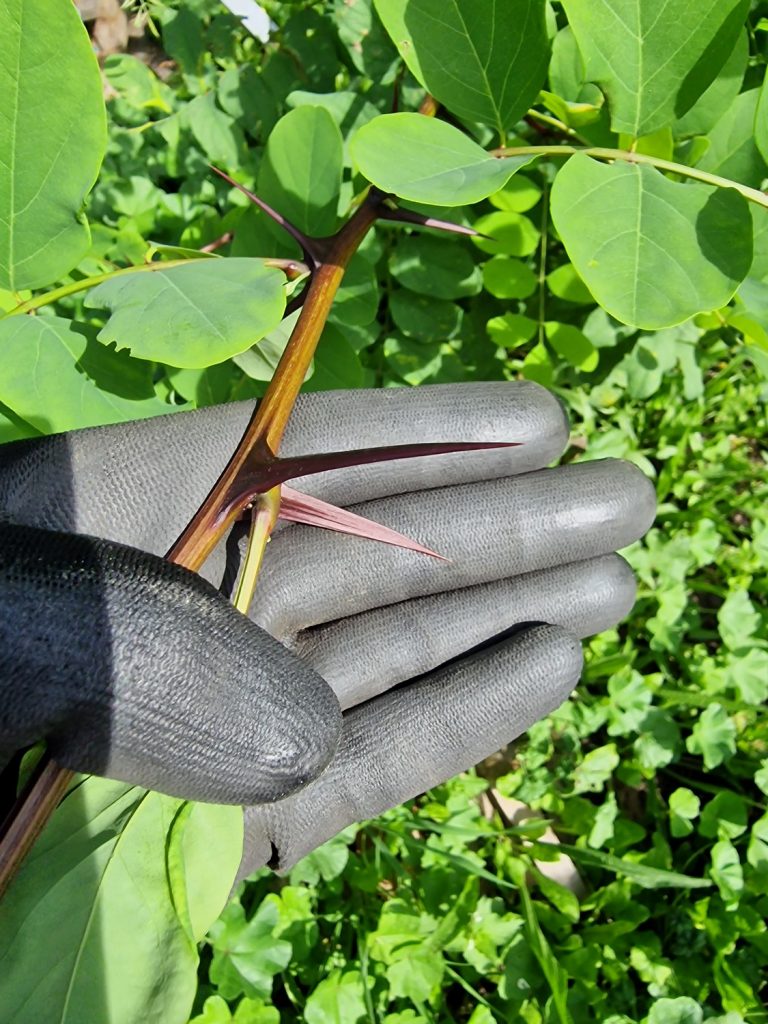
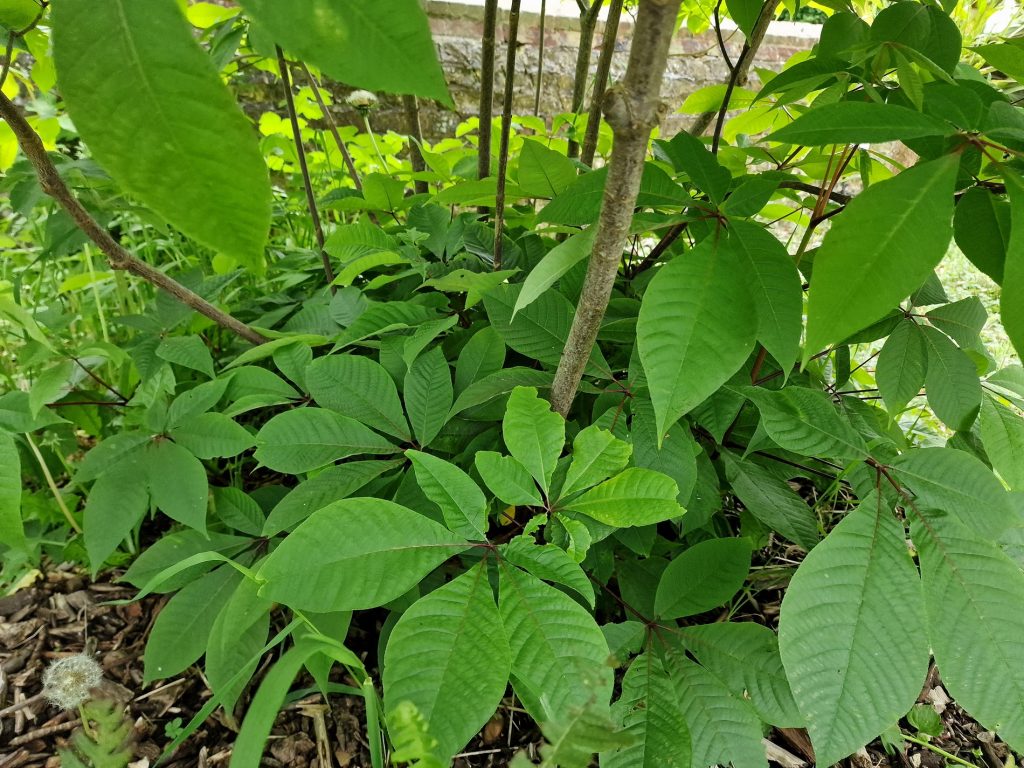
Amongst the shrubs, we still want grasses and perennials, but these must be chosen with care. In the UK we have mild winters, during which grasses may be in active growth; this is in sharp contrast to US prairies, where cold winters hold everything in check. Stoloniferous grasses could become rampant and take over everything in this situation, so small, clump-forming grasses with low foliage might be best. I’m thinking smaller forms of Molinia but they must also be tall enough to not be shaded out by the shrubs. Lots of experimenting to do here.
Perennial selection might be easier and range from foxgloves to species of Verbascum, Verbena, Asphodeline maybe and possibly some Iris species. Again, much to experiment with.
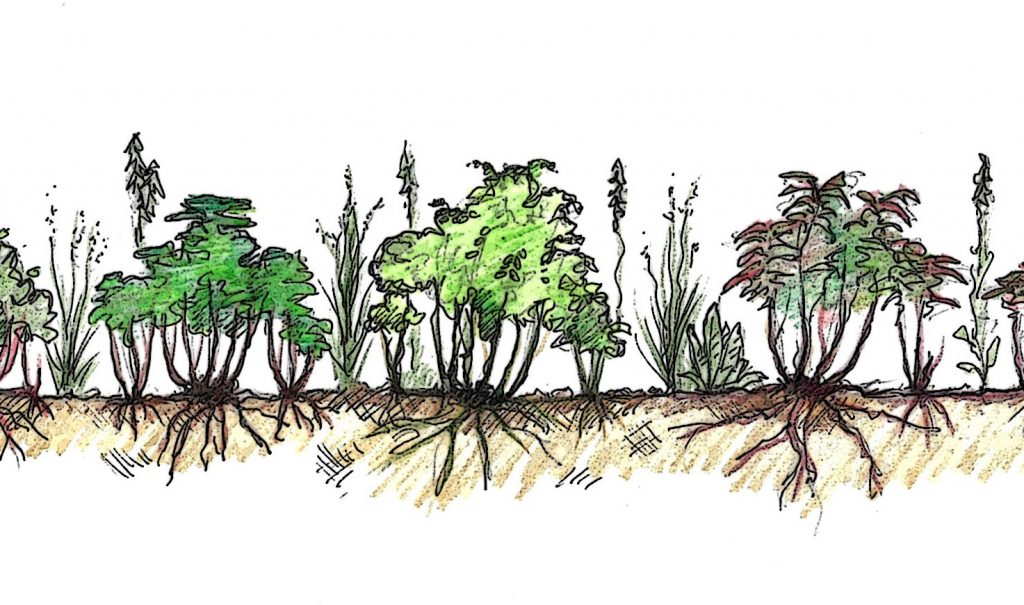
What would the maintenance be like? No more than an annual or biennial cutback in spring. For commercial landscapes this could even be done with a brushcutter (though loppers will be better) and all fed straight into a chipper-shredder and retuned to the ground as ramial chipped wood. No hedge-trimmed mounds required here! Plus of course, the inevitable weeding, at least during the establishment years and perhaps once freshly cut. In other words, no more work than usual, possibly less.
We need a new approach to urban landscapes, especially dull municipal plantings, where we can, with minimal input, create vibrant ecosystems that nourish wildlife, mitigate climate change and nurture our souls. This could be it.
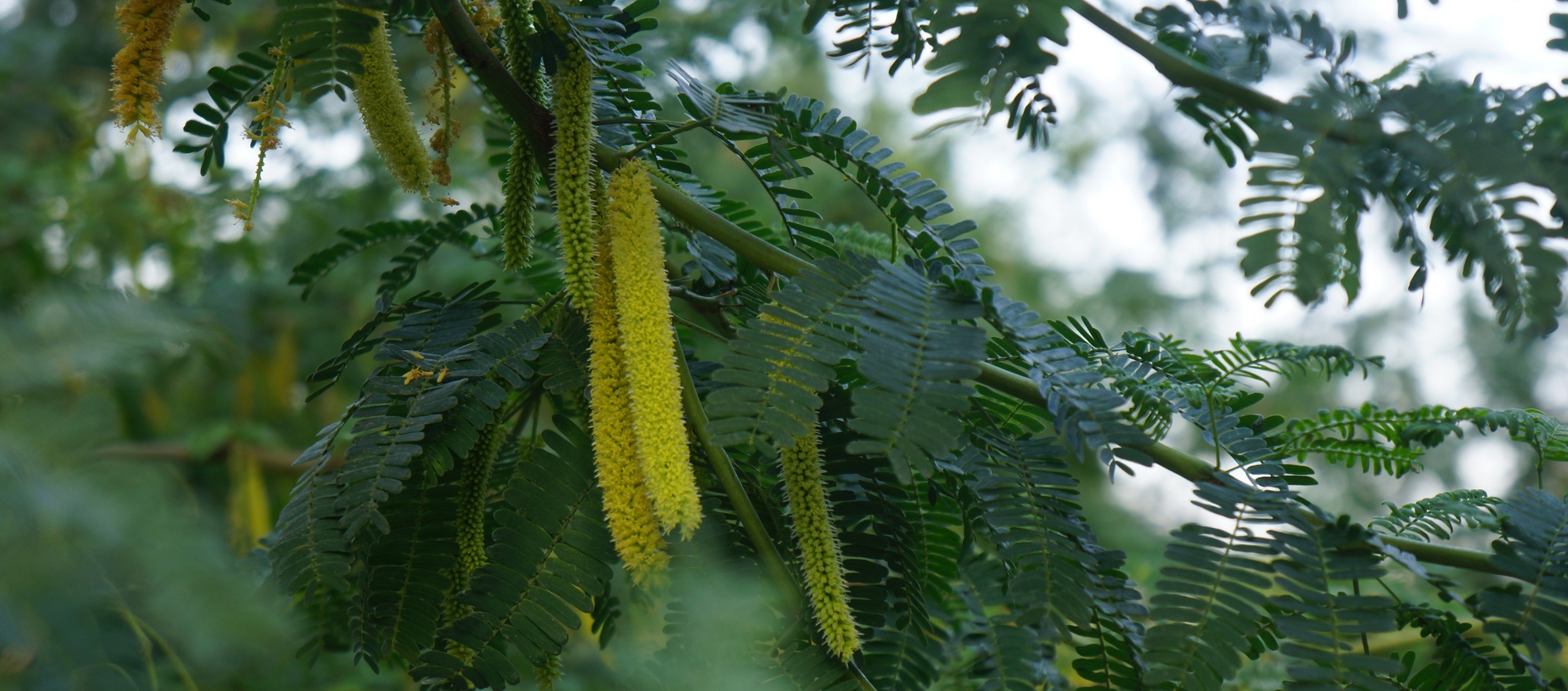
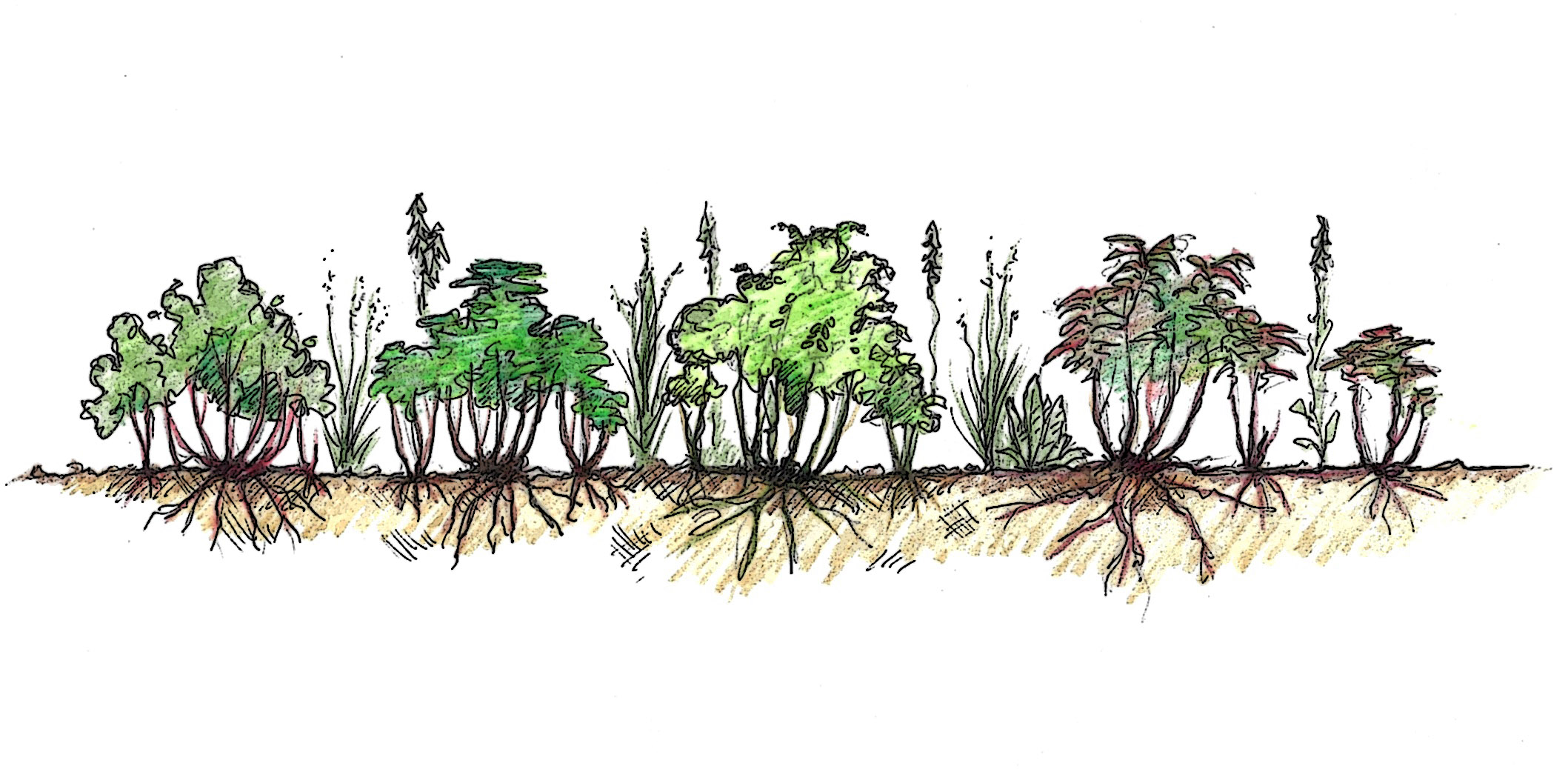
Interesting article Mark. I really like getting practical info on how and also what – so this is great.
Using this kind of approach would be great for bank stabilisation where a low maintenance approach is required partly because of access and also to minimise ground disturbance